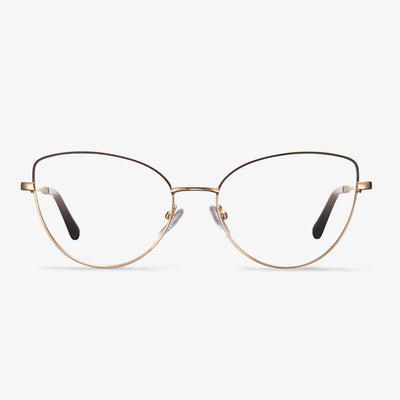What is blue light?
To prevent blue light, we must first understand what blue light is. The visible light with a wavelength range of 400-500 nanometers is called blue light. The light sources used in daily LED lighting and display products, including mobile phones, flat panels, and TVs, are mostly LED light sources excited by blue light. However, not all blue light is harmful to the human body. The human eye has an extremely low tolerance to blue light radiation in the 400-440 nanometer range. When the light intensity enters this threshold, photochemical damage is likely to occur. However, blue light radiation in the range of 459-490 nanometers is essential for regulating the human body's circadian rhythm and can affect the secretion of human melatonin, which in turn has an impact on the body's biological clock, alertness, and mood.
Scientifically effective anti-blue light lenses must not only block harmful blue light but also cannot filter beneficial blue light. Most of the ineffective anti-blue light products on the market currently have two types of problems. One is that there is almost no protective effect on the blue light in the vulnerable zone of the human eye. The other is excessive protection, shielding the blue light spectrum in the beneficial band so that the blue light that is beneficial for physiological adjustment cannot enter the human eye. At the same time, the color of the lens is yellow, which is prone to color shift, aggravating visual fatigue, and even inducing the risk of myopia.
Consider the elements of frame comfort.
What we need to know is that the frame exists first as a positioning device for the lens, and secondly as a beauty. The pupil is consistent with the optical center of the lens, so it should not be too high or too low. The horizontal direction is not skewed, and there is no one high and one low phenomenon. Bilateral symmetry is a standard for manufacturing enterprises. Non-mechanical symmetry is for the wearer. The frame should be adjusted according to the size of the wearer's face. The frame is not easy to slide down, and frequent slide is prone to the phenomenon that the pupil is too high and low to match the face.
What Are Progressive Lenses?
Progressive lenses are designed for people who are over 40 years old. It is a blended multi-focal lens with distance correction at the top, intermediate in the middle, and reading at the bottom. The goal is for the lens to work how your eye naturally works to let you see things both close up and far away.
Progressive lenses are made with an hourglass shape so there is some blurriness on the outer edges, but since it gives you your full range of vision, it is generally better than a bifocal despite being similar.
Early glasses
The first inventor of wearable glasses is not known. However, it was the Romans who first discovered the use of glass to enhance their ability to see small words, creating small magnifying glasses with spheres. The first known wearable glasses in history appeared in Italy in the 13th century. They were used mainly by monks, and became popular little by little during the Renaissance, as the technology improved. As their popularity grew, the Italian glasses spread throughout Europe, mostly within reach of the wealthy. Because learning was a prized attribute during the Renaissance, glasses were a status symbol of wisdom and prosperity. With the temple extending above the ear, the glasses are no longer required by hand.
Understand blue light correctly.
Blue light has been shown to affect the body's circadian rhythms, with too much exposure to it late at night from gadgets such as mobile phones disrupting a person's ability to fall asleep. Therefore, it is recommended that people limit screen time two to three hours before bedtime and set their devices to night mode to reduce glare, relieve eye fatigue and minimize blue light at night. However, as we learn more about blue light, not all of it is bad for us. Blue light has been found to play an important role in maintaining health, such as regulating the secretion of hormones in living organisms. Blue light helps prevent reduced night vision and has been shown to benefit refractive development in adolescents and minors.
What kind of lens is a progressive lens?
Progressive lenses are optical lenses designed for simultaneous correction of far, medium (for computer use), and near (for reading). They are Progressive Additional Lenses (PAL). The so-called progressive, The so-called progressive, is the use of polishing technology to achieve a gradual transition between the two focal lengths. The advantage of this design is that the wearer can see far and near objects alternately without taking off the glasses.
Who is suitable to wear progressive lenses
Progressive multifocal glasses are suitable for people with presbyopia or visual fatigue, especially teachers, physicians, musicians, computer operators, etc. They not only need to see far and near objects, but also most of the time, need to see objects at intermediate distances such as blackboards, piano scores, and computer screens. A pair of scientifically customized progressive multifocal glasses can simultaneously meet the needs of distance use, near use, and various distances in between. Some special young myopia patients wearing progressive multifocal glasses can also be used to correct the refractive power and effectively relieve eye fatigue.











































